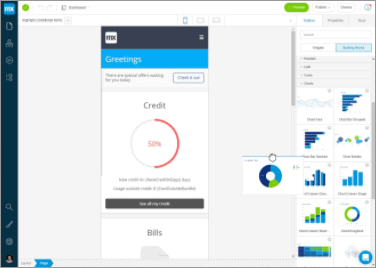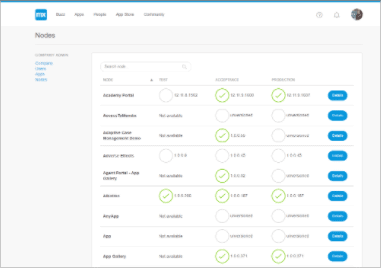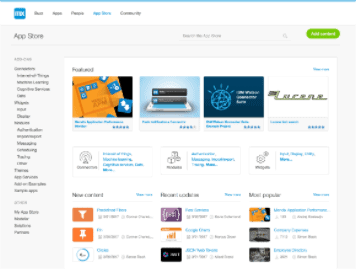Model Driven Design Based Tools
Dev Smarter, Not Harder.
Model-Driven Development
When communicating application functionality, Model-Driven Development (MDD) is proof that a picture is worth a thousand words.
How does Model-Driven Development work?
MDD is a software development methodology that allows users to build complex applications through simplified abstractions of pre-built components. Instead of telling, these visual building blocks show the business need and ways to solve technical problems. MDD is the most important principle of low-code development: it's the bridge that allows IT and business domain experts to collaborate, transforming ideas into applications that deliver value.
Under the hood, MDD simplifies complexity through abstraction and reduces human-process intervention through automation. The model in model-driven development projects is executable in runtime—instead of being interpreted into code. This allows MDD to sidestep common ops and quality issues with code-centric projects. Mendix's MDD approach is also open and extensible, which means your enterprise is prepared to adapt and integrate new technology rapidly.
-

Abstraction
In model-driven, low-code development, the model is a user-friendly veneer that encloses a pre-built application component (pieces of functionality). Each self-contained building block handles all the technical aspects of that component—from logic to user interface to the security and integration concerns—allowing them to operate together seamlessly. The result is a powerful drag-and-drop visual model of abstracted functionality that plays nicely with other components.
-

Automation
If abstraction is the model-driven development tenet that boosts collaboration between business and IT experts, automation is the tenet that increases productivity. Beneath the abstraction, low-code model-driven development automates the housekeeping and time-intensive chores that draw out a project. Configuration, testing and QA, integrations, and other necessary but mundane or repetitive processes are baked in—that not only frees up time and expedites delivery but also reduces error.
-

Openness
Mendix's low-code model-driven application development program is built to connect with an organizations existing technology stack, as well as future technological disruption and innovation. That's because it's open and extensible on every level. If the functionality doesn't exist, professional developers can write the code and build a new component that becomes part of the model. From legacy systems to yet-to-be-imagined technologies, Mendix's low-code model-driven development platform can help you build applications that address users' needs both now and in the future.
Low-Code and Model-Driven Development in One
Model-driven development is popular because it fosters collaboration, boosts productivity, and delivers better applications that meet users' needs. Optimized business-IT collaboration results in higher quality applications built in a fraction of the time. That's because MDD allows organizations to make faster changes—no need to explicitly regenerate, rebuild, retest and redeploy. Developers do not need to think about security other than configuring access control in the model.
Simply put, combining low-code and model driven development increases flexibility—from dynamic application monitoring, to cloud deployment opportunity, to debugging and runtime engine updating. Mendix's low-code model-driven development platform helps enterprises evolve beyond Agile and DevOps by promoting a BizDevOps framework for application projects.
-

Leverage Business Users' Expertise
Business experts don't have to wade through technical details, and can even create applications with Mendix Studio, built for citizen developers.
-

Increase the Speed of Delivery
Dev teams see projects surge forward as tasks and processes become automated and through visual modeling tools that reduce repetitive work and boost productivity.
-

Build with Peace of Mind
Ops rests easier knowing that guardrails, monitoring, quality checks, and push-button deployment are built in.
Empower Your Whole Team with Model-Driven Development
Mendix's low-code model driven development platform extends the reach of low-code into new domains, empowering developers of all skill sets to solve a growing list of business problems. With the release of Mendix 9, its easier than ever to access data from across an enterprise, improve quality through AI, quickly compose "intelligent automation" applications, and offer multiexperience solutions on flexible, cloud-native architecture. With model-driven low-code development, you can realize a holistic BizDevOps framework and empower teams by applying abstraction and automation to more applications.
Through abstraction, business and IT collaborate over clean, drag-and-drop models—or build simple apps themselves with no coding required. Automating integration, tech processes, and testing eliminates human error and increases productivity. And with Mendix's commitment to openness and extensibility, MDD can help you future-proof your application development. Code-centric application development is a thing of the past when you can build more relevant and powerful applications in a fraction of the time with model-driven development.
- Tools for Model-Driven Development?
The Mendix Web Modeler is a powerful tool for model-driven development. The platform features drag-and-drop functionality to visually build domain models, add logic through microflows and create the UI model through a WYSIWYG graphical page designer.
- Model-Driven Development vs Agile?
Model driven development and Agile go hand in hand with the Mendix low-code development platform. With powerful collaboration tools built into the platform, Mendix makes iterative development sprints more intuitive. Related Reading: Agile Methodology Guide
- Examples of Model-Driven Development in Industry?
There is no shortage of industrial applications built on the Mendix platform – from IoT-enabled smart apps for logistics to supply line management. Visit the Mendix App Gallery for working examples.
- Model-Driven Development vs Test-Driven Development?
Test-driven development (TDD) refers to a bare-bones approach to application development with a focus on short development cycles. Model-driven development can be used in conjunction with a TDD approach to application development.
- Benefits of Model-Driven Development?
The benefit of a model-driven approach to application development is centered around the abstraction away from code to form a visual model. This makes the development of an app much more accessible for those without prior coding knowledge. The Mendix low-code platform takes this a step further with robust collaboration tools embedded into the software.
Model Driven Design Based Tools
Source: https://www.mendix.com/model-driven-development/
Posted by: leeyeas2002.blogspot.com

0 Response to "Model Driven Design Based Tools"
Post a Comment